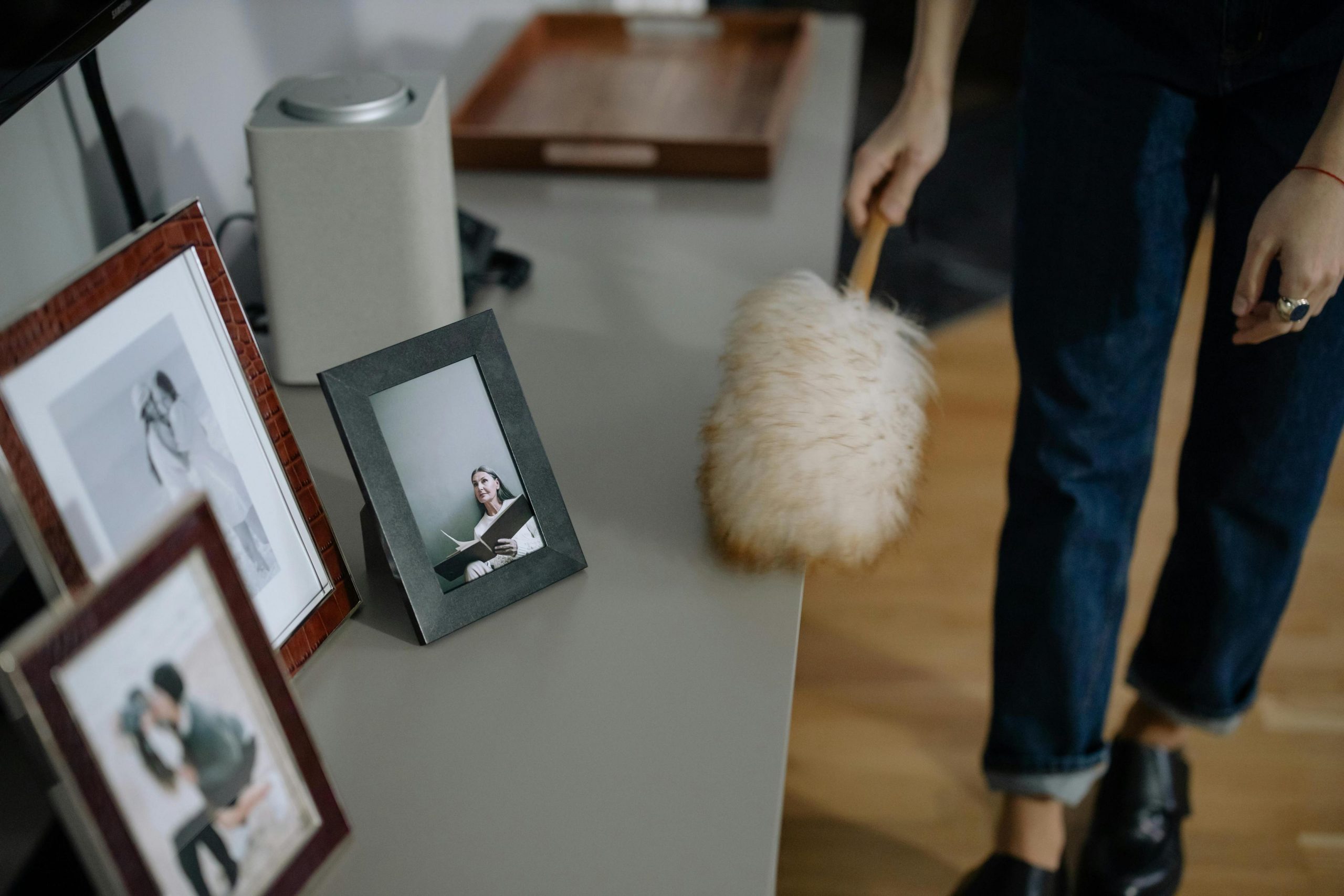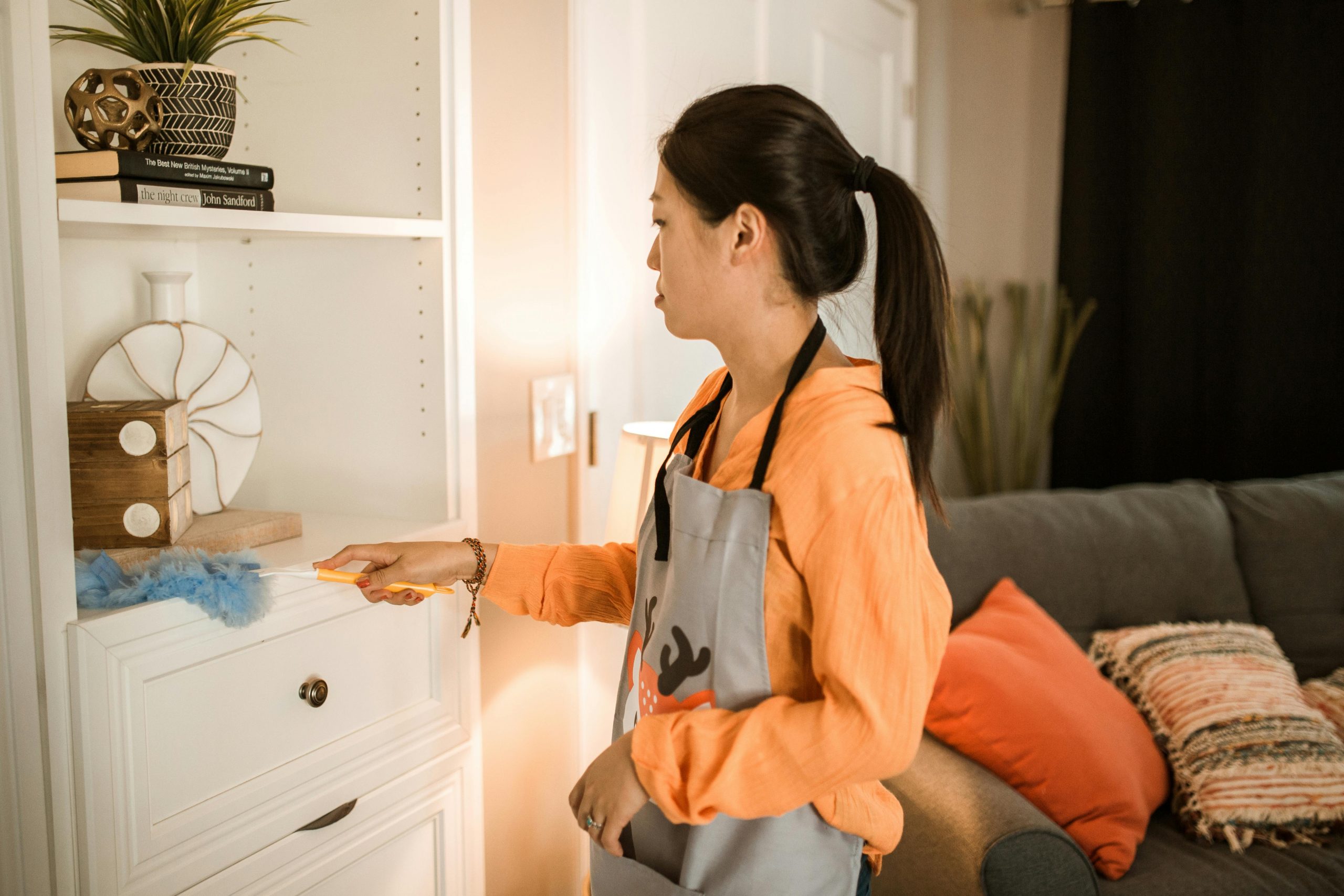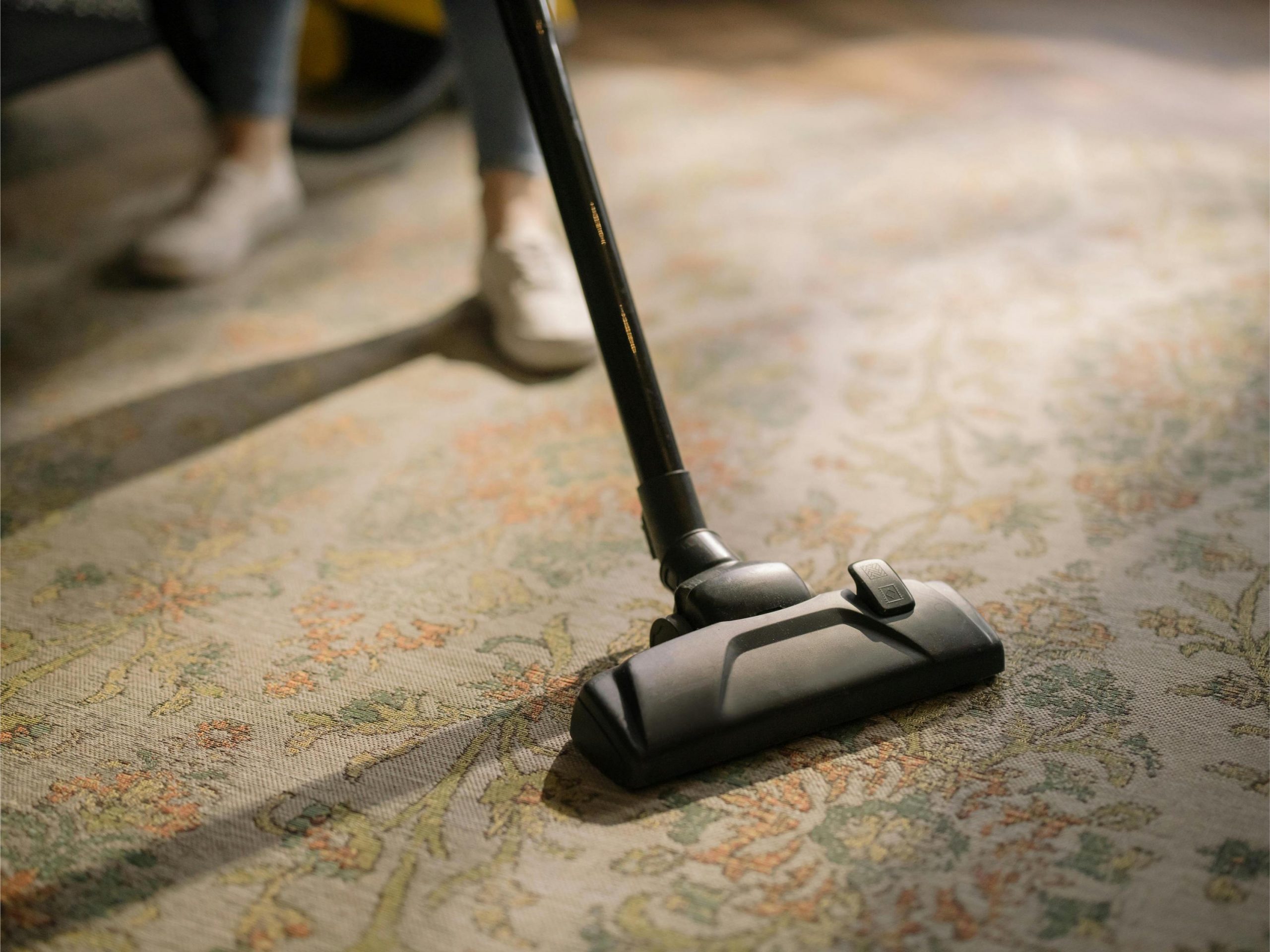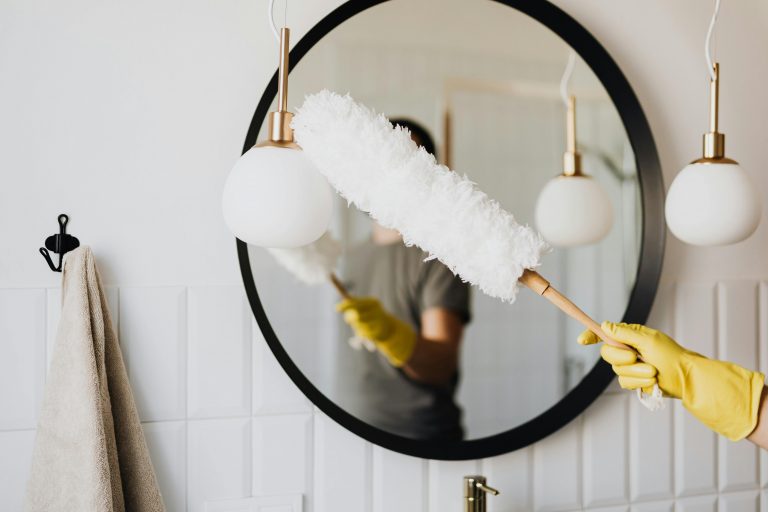Dust or Vacuum First? Here’s the Best Way to Clean Every Room

When it’s time to clean your home, you might find yourself wondering: Should I dust or vacuum first? It seems like a small detail, but the order you clean in can make a big difference in how clean your home feels—and how long it stays that way.
This article breaks down the science and logic behind dusting vs. vacuuming first, and gives you a step-by-step guide to a more effective and efficient cleaning routine. Whether you’re doing a quick tidy-up or a deep clean, this guide will help you get the best results without doing extra work.
Why Cleaning Order Matters
Cleaning isn’t just about making things look nice—it’s also about removing allergens, dust mites, pet dander, and dirt that can affect your air quality and health. But if you clean in the wrong order, you could end up making things worse by spreading dust back into the air or onto surfaces you’ve already cleaned.
That’s why following the right cleaning sequence matters. When done correctly, you’ll:
- Remove more dust and dirt in less time
- Avoid spreading allergens and fine particles
- Make your home feel cleaner, longer
- Save energy by avoiding re-cleaning
So, Should You Dust or Vacuum First?
You should always dust first. Dust settles downward. When you dust surfaces—especially higher ones like shelves, fans, and bookcases—it sends particles into the air. These particles then fall to the floor.
If you vacuum first, you’ll just have to vacuum again after dust settles. But if you dust first, and vacuum last, you’ll be able to trap all those fallen particles for good.
Dust First, Then Vacuum: The Golden Rule
Following this simple rule will keep your home cleaner and reduce airborne particles that can trigger allergies or asthma.
The Science Behind It
Dust is made up of many small particles—dead skin cells, hair, pollen, dirt, fabric fibers, and even microscopic organisms. When you wipe or disturb a dusty surface, those particles become airborne.
Studies show it can take up to two hours for dust to fully settle after it has been stirred. That means if you vacuum before dusting, you’ll miss the chance to collect the particles that later land on your freshly vacuumed carpet or floor.
Vacuuming after dusting ensures you trap those particles once they’ve settled, rather than leaving them behind.
A Step-by-Step Cleaning Routine That Works
Here’s a simple and effective order to follow for whole-house cleaning. This routine ensures you’re cleaning from top to bottom and from dusty surfaces to dirtier floors, so you don’t end up doubling your work or missing hidden grime. Whether you’re doing weekly maintenance or a deep clean, this method saves time and leaves your home feeling truly fresh.
- Declutter First
Pick up toys, clothes, trash, dishes, mail, and other items that are lying around.
This first step clears the way so you can clean without having to stop and move things later.
- Toss out any garbage or recycling
- Return items to their proper places
- Create neat piles or bins for sorting later
Removing clutter makes it easier to wipe surfaces, vacuum corners, and mop floors without obstacles. It also instantly makes your space look tidier.
- Dust from Top to Bottom
Start by dusting the highest areas in each room and work your way down. This allows any dust that falls to be cleaned up during later steps.
- Begin with ceiling fans, light fixtures, and crown molding
- Move to wall-mounted shelves, picture frames, and furniture tops
- Finish with baseboards, vents, and window sills
Use microfiber cloths, extendable dusters, or electrostatic tools that trap dust instead of spreading it. If needed, slightly dampen your cloth to help capture fine particles, especially around electronics.
Tip: Don’t forget the tops of doors, curtain rods, and behind furniture—these areas collect a lot of hidden dust.
- Clean or Polish Surfaces
Once the dust is gone, it’s time to clean and disinfect your surfaces. This step gets rid of grease, grime, and sticky spots that dusting alone won’t handle.
- Wipe counters, tables, desks, and shelves with a damp cloth or appropriate cleaner
- Use glass cleaner on mirrors and windows
- Disinfect high-touch surfaces like doorknobs, remote controls, and light switches
- Polish wood furniture if needed to restore shine
This step helps remove smudges, spills, and bacteria, leaving surfaces not just clean—but sanitized and fresh.
- Vacuum Thoroughly
Now that the dust has settled, it’s time to vacuum. Doing this after dusting ensures you pick up any particles that float down.
- Vacuum all carpets, rugs, and hard floors
- Use attachments to clean corners, under beds, around furniture legs, and along baseboards
- Vacuum upholstery like couches and chairs, especially if you have pets
Take your time—slow passes are more effective than quick ones. For high-traffic areas, make multiple passes in different directions to pull out dirt trapped deep in fibers.
Tip: If you have a HEPA-filter vacuum, it will help trap allergens and improve indoor air quality.
- Mop Floors (Optional)
If you have hard flooring like tile, vinyl, laminate, or hardwood, mopping adds that final touch of clean. Always mop after vacuuming to avoid pushing dust around with a wet mop.
- Choose the right mop and cleaner for your floor type
- Start in the farthest corner and work your way toward the door
- Rinse and change mop water as it gets dirty
For hardwood floors, use minimal moisture and a product made for wood. For tile or vinyl, a damp mop with an all-purpose cleaner works great.
- Empty the Vacuum and Wash Cloths
Once you’re done cleaning, take a few minutes to clean your tools so they’re ready for next time.
- Empty the vacuum canister or replace the bag
- Check and clean vacuum filters if needed
- Rinse and wash microfiber cloths and mop heads
- Let everything dry completely before storing
Cleaning your tools helps them last longer and keeps them working efficiently—plus, you won’t spread old dirt around the next time you clean.
Tools That Make Dusting More Effective
Using the right tools can make dusting easier, faster, and more effective. Here are some of the best options:
- Microfiber cloths – They attract and hold dust better than regular cloths
- Electrostatic dusters – Great for blinds, vents, and electronics
- Extendable dusters – Help you reach ceiling fans and tall shelves
- Vacuum attachments – Many vacuums include dusting brushes for delicate surfaces
- Damp cloth or sponge – For sticky or greasy surfaces (like kitchen cabinets)
Avoid using dry feather dusters—they tend to scatter dust into the air rather than trapping it.
Best Practices for Dusting
To get the most out of your dusting routine, keep these tips in mind:
- Dust high to low: Start with ceiling fans and finish at baseboards
- Use a lightly damp cloth: A dry cloth may push dust around; slightly damp traps it
- Don’t forget electronics: Wipe TVs, remotes, and keyboards with a microfiber cloth
- Rotate your dusting: Not all areas collect dust equally—focus on high-use areas weekly, and less-used rooms monthly
Best Practices for Vacuuming
Once you’ve dusted, you’re ready to vacuum. Here are some quick tips to get better results:
- Vacuum slowly: Give your machine time to lift debris from carpet fibers
- Make multiple passes: Go over high-traffic areas a few times
- Use the right setting: Adjust the height for hardwood, tile, or carpet
- Clean filters regularly: Dirty filters reduce suction power
- Vacuum in patterns: Try going north–south, then east–west for deeper cleaning
How Often Should You Dust and Vacuum?
Keeping a consistent cleaning schedule is key to reducing dust, maintaining indoor air quality, and keeping your home feeling fresh. How often you need to clean depends on your lifestyle, whether you have pets, and how much foot traffic your home gets. Here’s a general guideline to follow:
- Dust main areas like the living room, kitchen, and bedrooms 1–2 times per week to keep surfaces free from buildup.
- Dust low-traffic rooms, such as guest rooms or formal dining areas, every 2–4 weeks depending on use.
- Vacuum carpets and rugs 1–2 times per week, especially in high-use areas like hallways or family rooms.
- Vacuum hard floors, including tile, hardwood, and laminate, once a week or as needed to remove crumbs, pet hair, and dust.
- Deep vacuum with attachments every 2–4 weeks, using crevice tools to clean along baseboards, under furniture, and in corners.
If you have pets, allergies, or young children, you may need to dust and vacuum more frequently to stay ahead of hair, dander, and allergens. Following a regular schedule makes cleaning easier and keeps your home healthier.
Common Mistakes to Avoid
Even with the right tools and schedule, these common mistakes can reduce your cleaning success:
- Vacuuming before dusting: Causes re-settled dust to be left behind
- Using the wrong tools: Feather dusters and dry rags often push dust around
- Skipping baseboards and vents: These areas collect a lot of hidden dust
- Not cleaning vacuum filters: This lowers performance and leaves dirt behind
- Using too much product: Sticky residue from sprays can attract more dust
What If You Have Allergies?
If you or someone in your home has allergies or asthma, dust and dander can make symptoms worse. Here’s how to clean in a more allergy-friendly way:
- Use a HEPA vacuum that traps fine particles
- Dust with a damp microfiber cloth to capture allergens
- Wear a mask when dusting or vacuuming
- Run an air purifier during and after cleaning
- Wash bedding and curtains regularly
Final Thoughts
So, should you dust or vacuum first? Now you know—the answer is always dust first. This simple step can make your entire cleaning routine more effective and save you time in the long run.
By following a clear order—decluttering, dusting, vacuuming, and then mopping—you’ll remove more allergens, protect your air quality, and keep your home looking and feeling its best. Use the right tools, stay consistent with your schedule, and your house will thank you.
Cleaning might never be your favorite task, but doing it the smart way means you’ll only need to do it once—no more redoing what’s already done. And the next time someone asks, “Do you dust or vacuum first?” you’ll have the right answer—and the cleanest house on the block.





